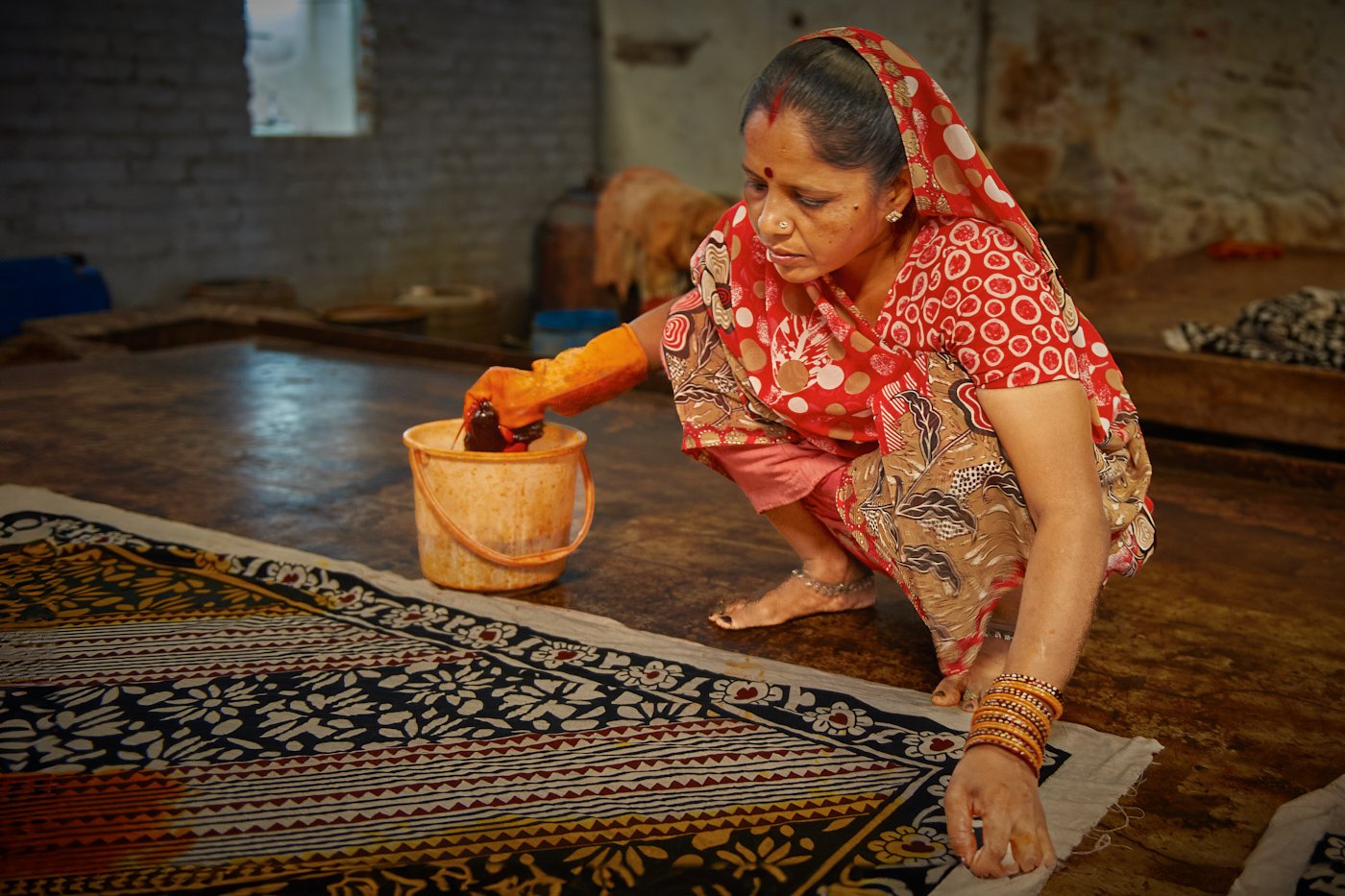Jaipur, Amer, Hathi Gaon & Sanganer
Jaipur
Jaipur is the capital and largest city of the state of Rajasthan. Founded in 1727, the city today has a population of more than 4.3 million and is known as the “Pink City.” Jaipur itself is a wonderful commercial city.
Jal Mahal, (or the Water Palace) sits outside of Jaipur in the center of Maan-sarovar lake. The palace was built in the 17th century in a Rajput style architecture. The lake is often dry in the winter, but summer monsoons frequently turn it into a beautiful lake filled with water hyacinths.
Hawa Mahal is a palace built in 1799 in the form of the crown of Krishna, the Hindu god. Its unique five-story exterior is like a honeycomb with its 953 small windows called “jharokhas” that are decorated with intricate latticework. The original intention of the lattice was to allow royal ladies to observe everyday life in the street below without being seen.
Amer
Amer city is about 8 miles from Jaipur in the state of Rajasthan. Amer is named for its fort, the Amer (or Amber) Fort, built in 1593 serving as a dramatic hilltop stronghold overlooking Jaipur. The fort is known for its artistic style, blending both Hindu Rajput elements. It has large ramparts, a series of gates and cobbled paths, and overlooks Maota Lake.
Most notable and the largest tourist attraction at the Amer Fort is the 20 minute elephant ride up to the fort itself. The elephants are brightly painted with water colors which makes a festive and beautiful site.
Hathi Gaon Village
Near Amer, is the Hathi Gaon village built to house the mahouts - keepers - and their elephants who work at the Amer Fort. The “haathi gaom” (elephant village) houses families and their 90 elephants and includes a large reservoir to bathe the elephants. Each home has an attached “garage” for the elephant.
We learned about the village and visited late in the afternoon when the Mahouts and keepers wash their elephants. There were no tourists and we were welcomed to visit families and their elephants.
Sanganer Town
Sanganer town is located in Rajasthan's Jaipur district, just south of the state capital, Jaipur in northwest central India. The town of less than 1000 is famous for textile printing, its handmade paper industry, and Jain temples.
Sanganeri textile block prints are recognized for their brightly colored patterns and are predominantly found with off-white or white backgrounds. A unique aspect of Sanganeri block printing is the use of natural dyes, including block painting with vegetables such as indigo, turmeric, and pomegranate. sanganer print are known for their vibrant colors and intricate patterns. The designs often feature floral motifs, geometric shapes, and other intricate patterns.
























































